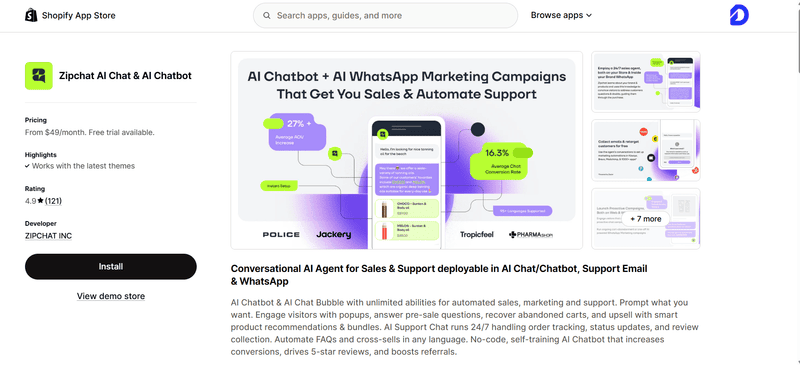
Business trends constantly keep evolving, and omnichannel customer experiences are at the forefront of today’s trends. Among the many omnichannel customer experiences that brands offer, phygital retail experiences are among the most sought-after.
This is largely due to the immense convenience that phygital retail offers customers by combining the best of physical and digital experiences. Here’s a detailed look at what phygital retail is, how it benefits retailers, some common phygital retail strategies, and more.
An Introduction to Phygital Retail
Simply put, phygital retail is the amalgamation of physical and digital customer experiences that allow customers to have a more personalized, cohesive journey.
The rise of phygital retail can be attributed largely to the dependence on technology to create better customer experiences. Customers now expect a more seamless brand experience between physical and digital stores, and phygital retail allows for exactly that.
How is Phygital Retail Beneficial to Brands?
A recent study showed that 27% of all people globally shop digitally. The same study also found that the growth rate for digital retail was higher at 13% when compared to in-store retail sales, where the growth rate was pegged at 4% annually.
Phygital retail allows customers to pick and choose how they want their retail journey with their favorite brands to be, offering them the best of both worlds. For example, a customer could have a product delivered home, but choose to return it and claim a refund from the brand’s store.
Another common example is that phygital retail allows customers to pay for an order online, but pick it up from their closest brick-and-mortar store.
But how does phygital retail actually benefit the businesses themselves? Let’s take a closer look.
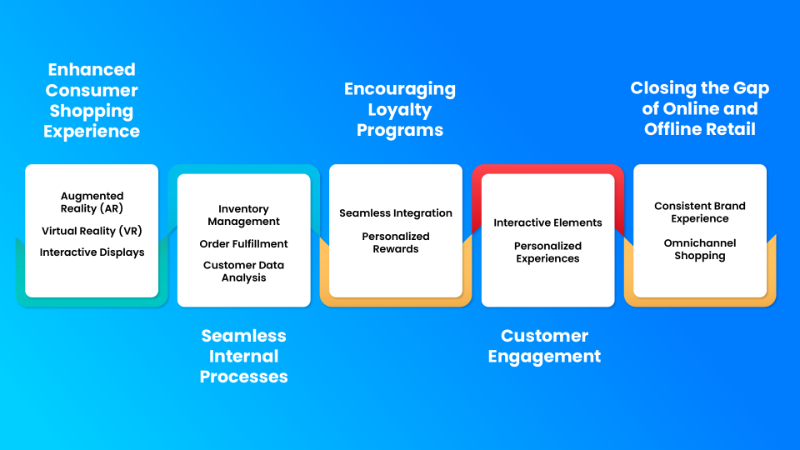
1. Enhanced Consumer Shopping Experience
Phygital retail is all about creating a shopping environment that is not only visually appealing but also interactive and engaging. Here's how it enhances the shopping experience for consumers.
Augmented Reality (AR)
Retailers can employ AR applications to overlay digital information or virtual objects onto the physical store environment.
For example, customers can use their smartphones to scan QR codes on product labels to access additional information, such as reviews or styling suggestions. This immersive experience brings an extra layer of engagement to the shopping process.
Virtual Reality (VR)
With VR, retailers can offer customers the chance to virtually "try on" products. For instance, a clothing store can provide VR headsets or applications that allow shoppers to see how different outfits would look on them without physically trying them on.
This not only adds a fun element to shopping but also reduces the need for fitting rooms, improving efficiency.
Interactive Displays
Retailers can incorporate interactive displays that respond to touch, gesture, or voice commands. These displays can provide product information, recommendations, and even interactive games that educate and entertain shoppers.
Interactive displays make the shopping journey more memorable and enjoyable.
2. Seamless Internal Processes
Phygital Retail extends its benefits beyond customer-facing aspects. It also greatly impacts internal operations and efficiency.
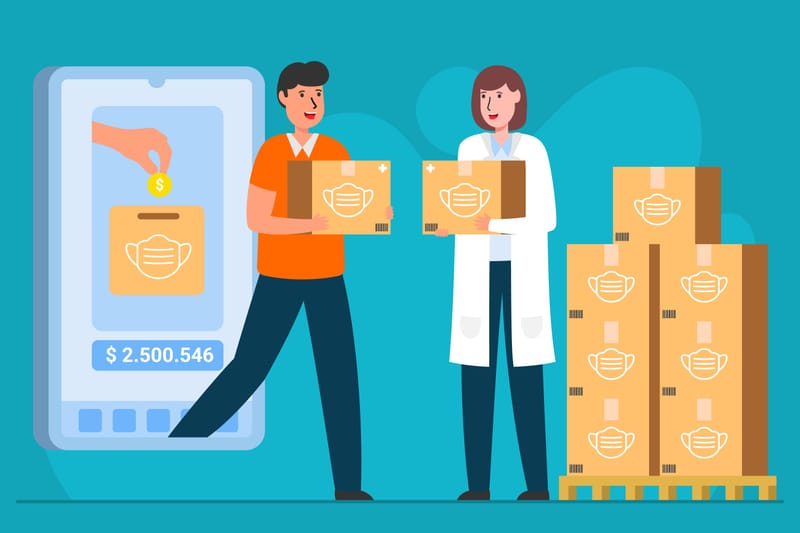
Inventory Management
Integrating digital systems with physical inventory helps retailers keep real-time track of their stock levels.
This minimizes the risk of overstocking or running out of popular items, optimizing inventory turnover and reducing carrying costs.
Order Fulfillment
Phygital strategies can improve order processing and fulfillment. For example, using IoT sensors, retailers can automate inventory replenishment when stock levels are low, ensuring products are always available for customers. This reduces the chances of missed sales due to items being out of stock.
Customer Data Analysis
The digital aspect of phygital retail allows retailers to collect and analyze vast amounts of customer data. This data can be used for better understanding customer behavior, preferences, and purchase patterns. Retailers can then tailor marketing efforts and product offerings more effectively.
3. Encouraging Loyalty Programs
Phygital retail also makes it easier for businesses to track customer behavior and build effective loyalty programs using that information.
Seamless Integration
Phygital retail provides an ideal platform for the seamless integration of loyalty programs. For example, a mobile app can track a customer's in-store purchases and offer rewards or discounts based on their buying history. This incentivizes customers to return and continue engaging with the brand.
Personalized Rewards
With access to customer data and preferences, retailers can customize loyalty rewards. Offering personalized discounts or special promotions based on a customer's shopping history not only encourages loyalty but also makes customers feel valued.
4. Customer Engagement
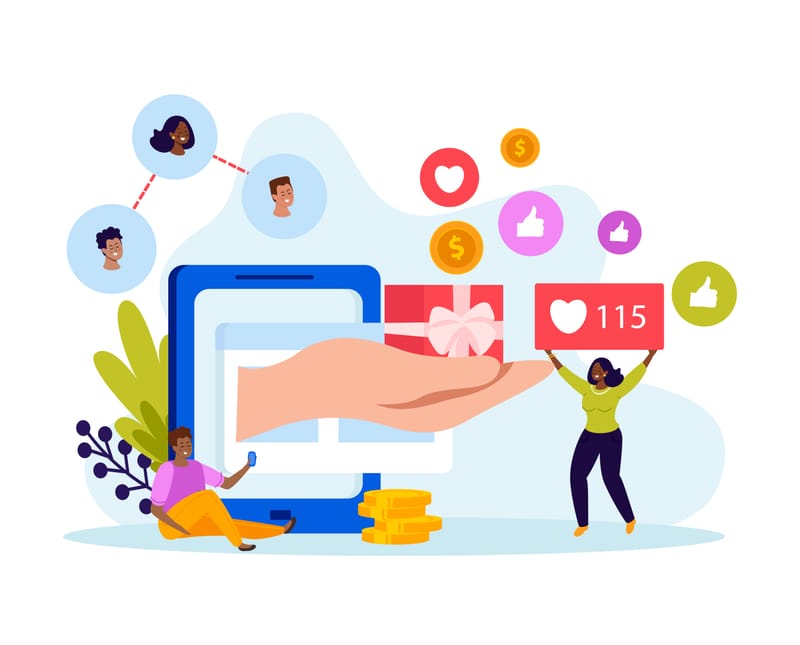
One of the main advantages of phygital retail is the increased customer engagement, and as a result, an increase in revenue. In fact, a study showed that 83% of all customers who went to a physical store to pick up an item that was ordered online ended up buying additional products.
Here’s how phygital retail increases customer engagement.
Interactive Elements
Phygital Retail's interactive elements, such as touchscreens, augmented reality experiences, and personalized recommendations, encourage customers to actively engage with the brand and its products.
This engagement extends the time customers spend in-store and increases the likelihood of purchases.
Personalized Experiences
Through data analytics, retailers can personalize the shopping journey. For instance, if a customer has a history of purchasing outdoor gear, the store can send them notifications about new arrivals in that category.
This level of personalization strengthens the emotional connection between customers and the brand.
5. Closing the Gap of Online and Offline Retail
Here is how phygital retail bridges the divide between online and offline shopping channels:
Consistent Brand Experience
Whether a customer interacts with a retailer's brand online or in-store, they should experience the same look, feel, and messaging. Phygital strategies ensure a consistent brand experience, which reinforces brand identity and trust.
Omnichannel Shopping
Customers increasingly expect the flexibility to switch between online and offline channels seamlessly. Phygital retail enables this omnichannel experience, allowing customers to research products online and complete their purchase in-store or vice versa.
5 Brands With Exceptional Phygital Retail Experiences
Let’s now take a look at 5 brands that are on top of the phygital retail game.
1. Apple
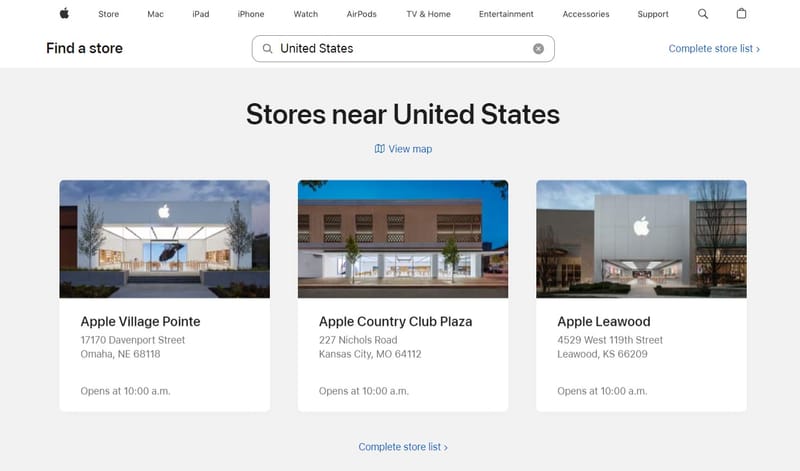
In-Store Experience
Apple's retail stores are a prime example of phygital retail. They offer interactive displays where customers can try out products, and knowledgeable staff use iPads for instant product information and transactions.
Seamless integration
Apple's ecosystem ensures a seamless transition between online and offline experiences. Customers can make online purchases, schedule in-store appointments for technical support, and even use their devices for contactless payments in-store.
2. Nike

Augmented Reality (AR)
Nike employs AR in their mobile app, allowing customers to virtually try on shoes. This enables customers to see how different sneakers look on their feet before making a purchase.
Data-Driven Personalization
Nike uses customer data to provide personalized product recommendations, both online and in-store, creating a tailored shopping experience.
3. Amazon
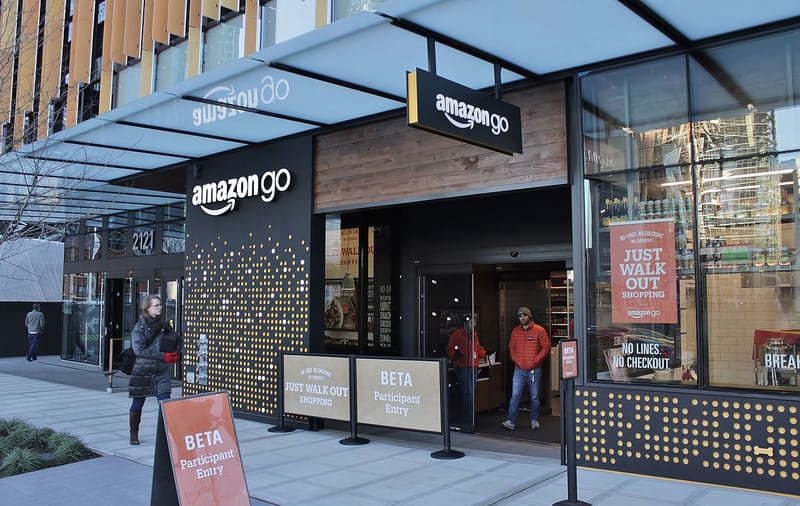
Amazon Go
Amazon has redefined the convenience store experience with Amazon Go. Shoppers can pick up items and simply walk out, as the store uses a combination of sensors and cameras to automatically charge their Amazon accounts. This blends the online and offline shopping experience seamlessly.
The "Just Walk Out" technology in Amazon Go stores is a prime example of Phygital Retail, where physical stores leverage digital technology to make shopping frictionless.
4. Sephora
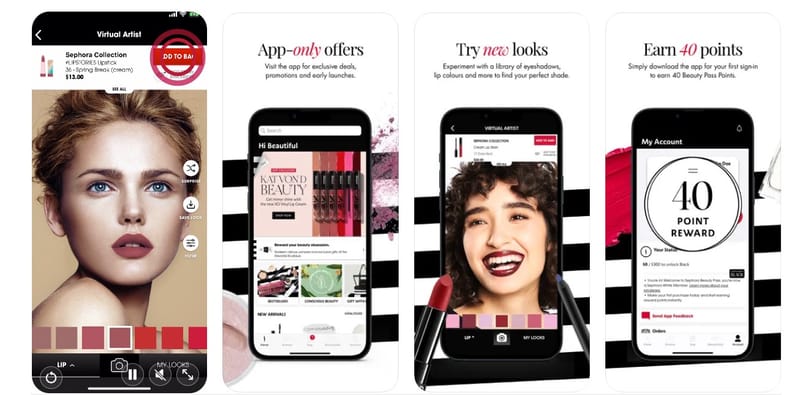
AR Beauty Try-On
Sephora's Virtual Artist feature in their app allows customers to try on makeup virtually. This helps customers make informed purchase decisions and enhances their in-store beauty experience.
Personalized Beauty Profiles
Sephora uses customer data to create personalized beauty profiles, enabling tailored product recommendations and loyalty rewards, both online and in-store.
5. LEGO

In-Store Interactive Displays
LEGO stores feature interactive displays that showcase assembled LEGO sets in 3D, which customers can rotate and explore digitally. This engages both children and adults in an immersive experience.
LEGO Digital Designer
The LEGO Digital Designer is a desktop application that lets customers design their own custom LEGO creations virtually before purchasing the necessary pieces. It seamlessly connects the physical act of building with the digital design process.
Build Effective Phygital Retail Experiences With Dyrect
If you’re looking for a partner to help you build effective phygital experiences, you need to look no further than Dyrect.
Our industry-leading single click QR code product registration software allows customers to register their purchases in less than a minute. This gives you access to first-party data, allowing you to build immersive omnichannel strategies.
Our tool also gives you access to critical insights into customer behavior, while our no-code builder enables you to build personalized phygital experiences.
If you’d like to know more about why hundreds of global brands look to Dyrect for their post-purchase customer experiences, book a demo with our team today!

